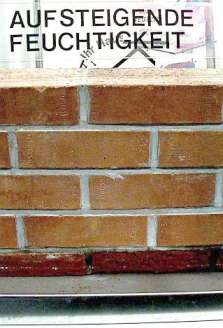- Joined
- 18 Nov 2005
- Messages
- 50
- Reaction score
- 1
- Country

In which funny world of good guys are you living? Surveyors world-wide like the rising damp and measuring of dampness because this is the best business with poor house owners which you can imagine. Huge billions of money worth - so why bother with opposite point of views. And so lot of not much thinking people - just and also in administration - will follow them. It is not their money they waste in public buildings, its only our tax. And some money will perhaps wander in their purses also. No wonder in mafiotic Germany, perhaps also in other parts of the world.
I restorate old buildings - and very well known monuments like castles, monasteries, churches and townhalls - in Germany since more than 20 years and have learnt from the old craftsmans skills a lot. As I am responsible for my plannings you can imagine that I will not only joke just around. I have cured a lot of suspected 'rising' damp with the most simple means - otherwise I would not lose only a word about it.
Once more: It is no capillary transport between stone pores and mortar pores - try it out with your very special stones and contradict me with a real refutation. Post the foto in this thread - I am excited. Here is another of mine:
 (Aufsteigende Feuchtigkeit means rising damp - in spite of not showing some - from a mess installation in Leipzig - thousands have seen it and no one has noticed that there is none)
(Aufsteigende Feuchtigkeit means rising damp - in spite of not showing some - from a mess installation in Leipzig - thousands have seen it and no one has noticed that there is none)
I restorate old buildings - and very well known monuments like castles, monasteries, churches and townhalls - in Germany since more than 20 years and have learnt from the old craftsmans skills a lot. As I am responsible for my plannings you can imagine that I will not only joke just around. I have cured a lot of suspected 'rising' damp with the most simple means - otherwise I would not lose only a word about it.
Once more: It is no capillary transport between stone pores and mortar pores - try it out with your very special stones and contradict me with a real refutation. Post the foto in this thread - I am excited. Here is another of mine:
